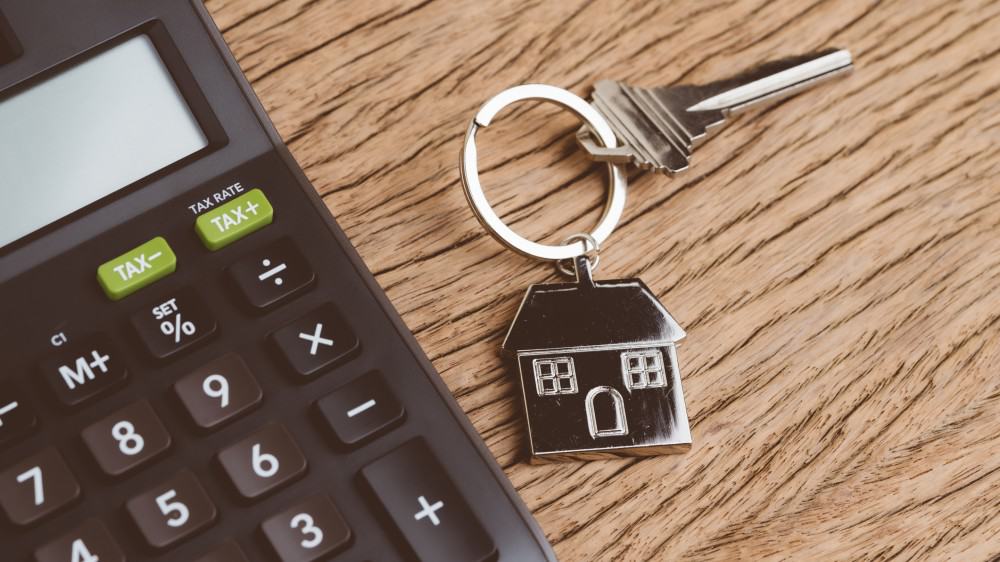According to Halifax, 2021 saw a record increase of 35% in first-time buyers getting on the property ladder despite rising prices and low affordability. Halifax reports that the average first-time buyer was a 32-year-old buying a £264,000 property with a deposit of £54,000.
The housing market was buoyant in 2021, fuelled by the government’s stamp duty holiday, with ONS reporting that average prices increased by nearly 10%. With the Bank of England increasing interest rates on 3 February, first-time buyers may be further feeling the squeeze.
So, where are the most and least affordable areas to live in the UK? And what steps can buyers take to help them save a deposit for their first home?
[top_pitch]
Where are the most affordable areas to buy?
Here are the five most affordable areas in the UK, according to Halifax:
- Clackmannanshire (near Edinburgh) is the most affordable area, with the average price of a first-time buyer’s home being three times average income (the ‘price-to-income’ ratio). Rightmove reports average house prices of £168,000 in this area.
- West Dunbartonshire and East Ayrshire are in joint second place, with price-to-income ratios of 3.2. Both areas are near Glasgow and have average house prices of £133,000, according to Rightmove.
- The last two areas are also near Glasgow. North Ayrshire is the fourth most affordable area, with a price-to-income ratio of 3.3, followed by Renfrewshire at 3.5.
And where are the least affordable areas?
Halifax identified these as the five least affordable areas for first-time buyers, all being in Greater London:
- In first place was Brent, with a price-to-income ratio of 12.3, putting it well out of reach for most first-time buyers. Average house prices are £763,000 in Cricklewood, £770,000 in Willesden and £492,000 in Wembley.
- Camden was in second place with a price-to-income ratio of 12.2. Average house prices are an eye-watering £1.9 million in Primrose Hill, £1.6 million in Fitzrovia and £1.5 million in Hampstead.
- Haringey in North London, covering Tottenham, Wood Green and Hornsey, was the third least affordable area with a price-to-income ratio of 11.4.
- Waltham Forest was in fourth place, with a price-to-income ratio of 10.9. Average house prices are £545,000 in Walthamstow and £519,000 in Chingford.
- Hillingdon in North-West London was the fifth least affordable area, with a 10.6 price-to-income ratio.
As a general rule, buyers can borrow up to four to 4.5 times their annual salary, meaning up to £135,000 if you earn £30,000. This makes it very difficult for first-time buyers to afford houses in many parts of the UK, particularly given the size of deposit needed.
How large a deposit do you need?
The size of the deposit is determined by two things:
- Your mortgage lender’s requirements: mortgages are typically available up to 95% loan-to-value, meaning you’d need a minimum of a £20,000 deposit for a £400,000 house. If you have a larger deposit, you’ll be more attractive to lenders and potentially eligible for cheaper mortgage rates.
- The price of the house: unsurprisingly, higher deposits are needed in areas with high property prices, as the table below (from Halifax) shows.
|
Region |
Average house price |
Average deposit |
% deposit |
|
London |
£489,000 |
£116,000 |
24% |
|
South East |
£322,000 |
£61,000 |
19% |
|
South West |
£239,000 |
£50,000 |
20% |
|
West Midlands |
£205,000 |
£37,000 |
18% |
|
North West |
£175,000 |
£34,000 |
18% |
First-time buyers in London need a sizeable deposit of £116,000, nearly a quarter of the average house price. The West Midlands and the North West are the most affordable areas, with average deposits of under £40,000.
[middle_pitch]
How can you boost your deposit?
Rising house prices have made the property market more challenging for first-time buyers. Halifax now estimates that the age of the average first-time buyer has increased from 29 to 32 over the last decade.
According to Savills, the ‘Bank of Mum and Dad’ supported 49% of first-time buyers’ purchases in 2021. But if that’s not an option, how can you increase your deposit?
It’s not rocket science, but small savings such as ditching takeaways or waiting to upgrade your phone add up over time. Rent is a major cost, so living with your parents could increase your disposable income.
It’s also worth checking your savings accounts to ensure you’re getting the best rates of interest. But with inflation over 5% and the average savings account paying 0.2%, there may be better ways to make your money work harder.
UK stock market returns have averaged nearly 8% a year according to IG (based on the FTSE 100 since 1984). Stocks & Shares ISAs are a good way of investing in the stock market as there’s no income or capital gains tax to pay. You can contribute £20,000 per person per year. Investing in funds could be a good way of spreading risk, as you’re effectively buying a bundle of shares picked by market experts.







